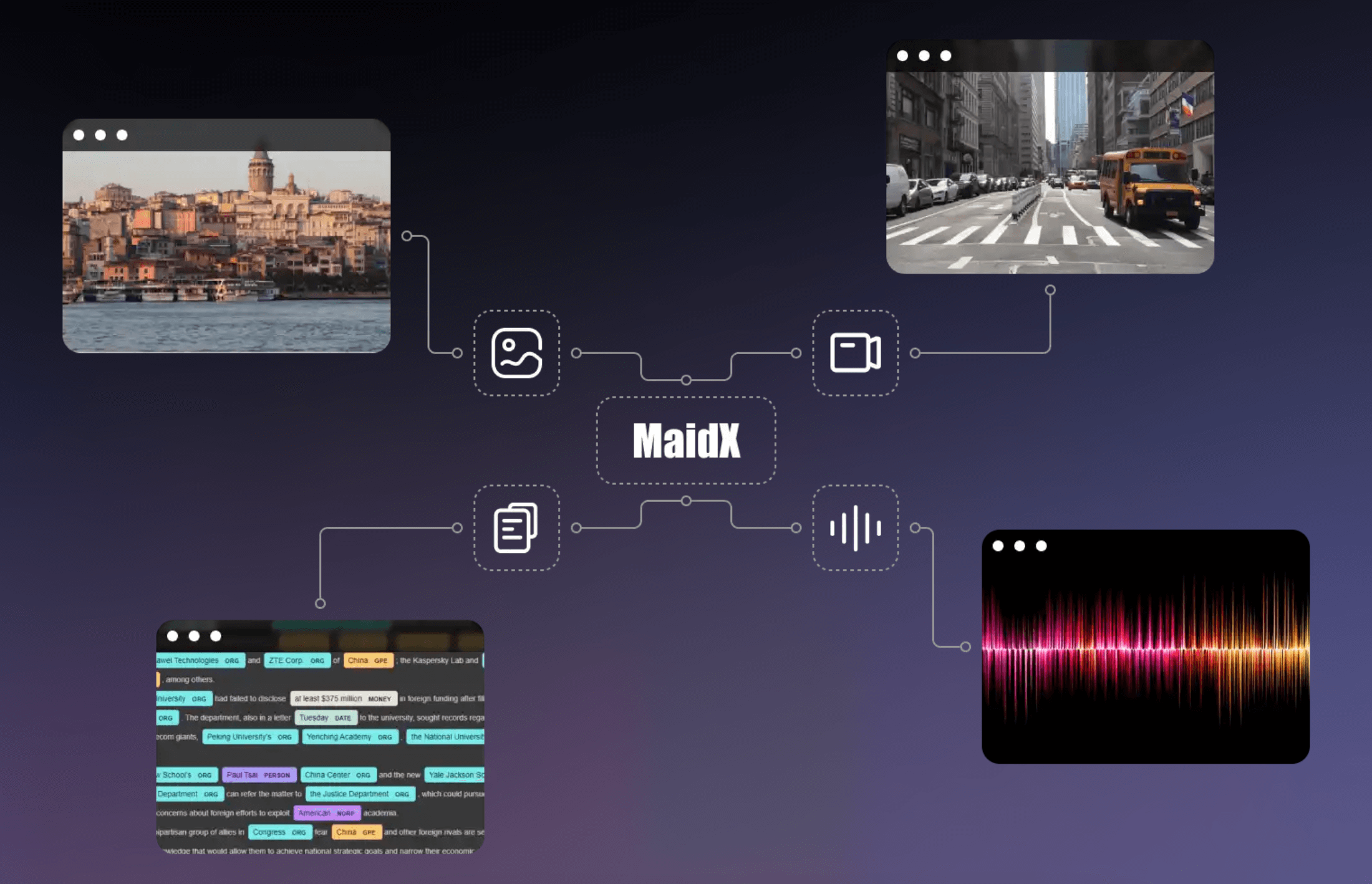Overview:
Millions of users share their opinions, feelings, and experiences every second on social media platforms today. For businesses and researchers, making sense of this vast amount of user-generated content is critical. This is where data annotation services come in, helping to tag posts for better content moderation, improved machine learning models, and valuable business insights.
A leading social media platform is now seeking comprehensive labeling services to identify content that violates laws, regulatory guidelines, and platform policies. These services will span multiple media types, including text, video, and images, and cover multiple categories of objectionable content.

Background: The Complexity of Content Moderation And Annotation
Content moderation and annotation represent one of the largest expenses in the development of social networking services (SNS). As platforms strive to manage user-generated content effectively, intelligent solutions have become a critical focus for major players in the industry.
Recent advances in deep learning technology have revolutionized the way textual content is moderated and annotated. By leveraging sophisticated algorithms, platforms can achieve significant cost reductions and enhanced efficiency in handling vast amounts of data. This not only streamlines operations but also improves the overall user experience by ensuring that content conform to community standards.
The emergence of multimodal Large Language Models (LLMs) further expands the horizons for automated moderation and annotation. These technologies enable social networking platforms to seamlessly handle different content types-from text to images to video-promising a more integrated approach to content oversight.
Despite these advances, human content moderation remains essential. While automation can significantly ease the burden of content management, the nuanced understanding and contextual awareness that human moderators provide is critical. For the foreseeable future, a hybrid approach that combines the strengths of AI with human expertise will be essential to maintaining the integrity and safety of social networking environments.
As the landscape of content moderation continues to evolve, embracing these innovative technologies while recognizing the value of human oversight will be key to thriving in the competitive world of social networking services.

Key Challenges in Social Media Content Annotation:
1. Scale, Volume, and Multimodal Data
The sheer volume of content generated on social media platforms is staggering. Every second, vast amounts of text, images, videos, and other multimedia are shared, posing significant challenges for data annotation.
2. Contextual Nuances and Ambiguity
Context plays a critical role in how content is interpreted.
For example, a humorous meme may be misclassified as offensive if the cultural or situational context is not fully understood by the annotator.
In addition, ambiguous content, such as a video depicting violence, may require careful discernment to determine whether it depicts real events or fictional scenarios.
Labelers must be able to analyze the context in order to effectively apply the correct labels.
3. Language Evolution and Slang
The Internet has its own evolving language. From “yeet” to “sus,” new slang terms are popping up faster than you can imagine.
The rapid evolution of language on the internet presents another challenge. New slang terms and internet-specific jargon emerge frequently, and labelers must stay informed about these linguistic trends to avoid misclassification.
4. Complex Multi-Layered Labeling
Labeling objectionable content on social media involves a variety of categories, each with specific criteria. For instance, labels may be required for:
Objectionable Content: These labels would indicate whether the content (text, image, or video) violates the platform’s community guidelines or applicable laws and regulations. Examples could include:
- Hate speech
- Explicit sexual content
- Graphic violence
- Incitement to violence
- Misinformation/Disinformation
Sensitive Content: Labels that identify content as potentially sensitive or disturbing, even if it does not directly violate any rules. Examples include:
- Disturbing images
- Mature topics
- Solicitation of minors
User Behavior: Labels that identify patterns of user behavior that could be problematic, such as:
- Coordinated inauthentic activity
- Suspected bot/spam accounts
- Repeated violations of the Community Guidelines
5. Multilingual and Multicultural Content
In a globalized digital landscape, content is often shared in multiple languages and cultural contexts.
For example, a text post in Spanish that promotes illegal activities needs to be correctly identified and labeled by someone who understands the language and cultural nuances, to avoid incorrect moderation of content that might be satirical or used in a different context.
6. Legal and Ethical Considerations
Content labeling must comply with a complex landscape of international laws and ethical standards. This requires a thorough understanding of user rights and regulatory frameworks to ensure compliance.
Additionally, labelers must remain vigilant against personal biases that may influence their judgments, particularly when interpreting potentially offensive content.
7. Consistent Quality at Scale
As social media content has expanded, the challenge of managing the growing volume of content while maintaining high standards of quality has become a major focus.
Effective Strategies for Overcoming Content Annotation Challenges:
1. Scaling Up for High-Volume Projects
When it comes to handling massive amounts of data, flexibility is key. At maadaa.ai, we’ve built a dynamic team of annotators that can easily expand or contract based on project needs. By tapping into a global workforce and using top-notch project management systems, we are well-positioned to handle high volumes with ease.
Furthermore, we have assembled an exceptional auditing team and offer regular training to ensure that our annotators remain at the forefront of their field.
2. AI-Powered Annotation with Human Oversight
For projects with varying complexity and volume, we use a smart blend of AI and human oversight. Here’s how it works:
Pre-annotation: Our MaidX data platform kicks things off by automatically annotating mutlimodal data like text, images, audio, and video.
Human-in-the-loop: Skilled annotators then step in to review and refine these AI-generated annotations.
Feedback Loop: Any corrections annotated by humans are fed back into the system, improving accuracy, context sensitivity, and scalability over time.

3. Tackling Contextual Nuances and Ambiguities
Understanding context is crucial, especially in a global environment. Here’s what maadaa.ai did:
Cultural Training: Our annotators undergo thorough cultural sensitivity training to understand different global contexts, current events, and cultural nuances.
Contextual Information: We provide annotators with relevant contextual information, such as user profiles, posting history, and trending topics, right in the annotation interface.
Collaborative Annotation: For tricky content, multiple annotators work together to reach a consensus.
Multi-level Review: Complex or ambiguous cases are escalated to senior annotators or subject matter experts for final decisions.
4. Keeping Up with Language Evolution and Slang
Language is always evolving, and so are we:
Regular Updates: We maintain an up-to-date database of slang, Internet jargon, and new linguistic trends.
Community Feedback Loop: Annotators can report new terms they come across, which we then verify and add to our knowledge base.
5. Handling Complex Multi-Layered Labeling
Labeling isn’t always easy, but we’ve got it covered:
Hierarchical Labeling System: We develop a comprehensive, hierarchical labeling taxonomy that covers all necessary categories and subcategories.
Decision Tree: Our annotation interface uses a decision tree to guide annotators, ensuring consistent and accurate labeling.
6. Navigating Multilingual and Multicultural Content
Diversity is our strength, and we embrace it fully:
Global Network: Our team includes annotators proficient in multiple languages and different cultures, covering over 40 countries and more than 20,000 active annotators.
Translation Integration: Our platform integrates real-time translation tools to assist annotators when working with unfamiliar languages.
Cultural Consultants: We have a network of cultural consultants who provide insights on specific cultural nuances when needed.

7. Legal and Ethical Considerations
Legal Training: We provide regular training on relevant laws, regulations, and ethical guidelines.
Regular Legal Training: We provide ongoing training on relevant laws, regulations, and ethical guidelines to all annotators.
Ethics Review Board: We’ve set up an internal ethics review board to handle complex cases and develop guidelines for ethically challenging scenarios.
8. Ensuring Consistent Quality at Scale
Quality is paramount, regardless of scale:
Quality Assurance Sampling: We regularly sample and review a percentage of annotated content to ensure consistent quality.
Performance Metrics: We track individual annotator performance metrics, providing targeted training and support as needed.
Continuous Learning: We use common errors or inconsistencies to update our guidelines and training materials, ensuring continuous improvement.

The Results: Enhancing Social Media Moderation
Implementing our content labeling solution resulted in significant improvements across multiple metrics:
Improved Accuracy and Efficiency
Our hybrid annotation approach resulted in a 40% increase in labeling accuracy and a 65% increase in processing speed. This improvement enabled our client to more effectively manage the growing volume of content without compromising quality.
Increased User Satisfaction
With more precise content moderation, user complaints about inappropriate content decreased by 53%.
Cost Savings
The solution proved cost-effective, resulting in a 30% reduction in overall moderation costs. This reduction was achieved through increased efficiency and a reduced need for content review.
Multilingual Capabilities
Our team successfully handled content in over 5 languages, resulting in a 75% improvement in the moderation of non-English content.
Enhanced Regulatory Compliance
The robust labeling system led to a 90% decrease in regulatory flags, mitigating potential legal risks.
In summary, our human-assistated intelligent content moderation and annotation solution not only met the client’s expectations, but also delivered measurable improvements in accuracy, efficiency, user satisfaction, and compliance.

As noted by the client’s leadership, these enhancements have positioned them to better navigate the complexities of content moderation in today’s digital landscape.
Unlock the potential of your social media strategy with maadaa.ai’s advanced content annotation services!
Are you ready to elevate your content moderation game? Join the ranks of leading platforms that are transforming user engagement and compliance through precise, multimodal data annotation.
Our expert team is equipped to tackle the complexities of social media content, ensuring not just compliance but also enhancing user satisfaction and operational efficiency.
Don’t let the overwhelming volume of user-generated content hold you back. Take action now!
Contact us today to discover how our tailored solutions can help you navigate the ever-evolving landscape of social media, ensuring your platform remains a safe and engaging space for all users.
Visit: https://maadaa.ai/
Email: contact@maadaa.ai



